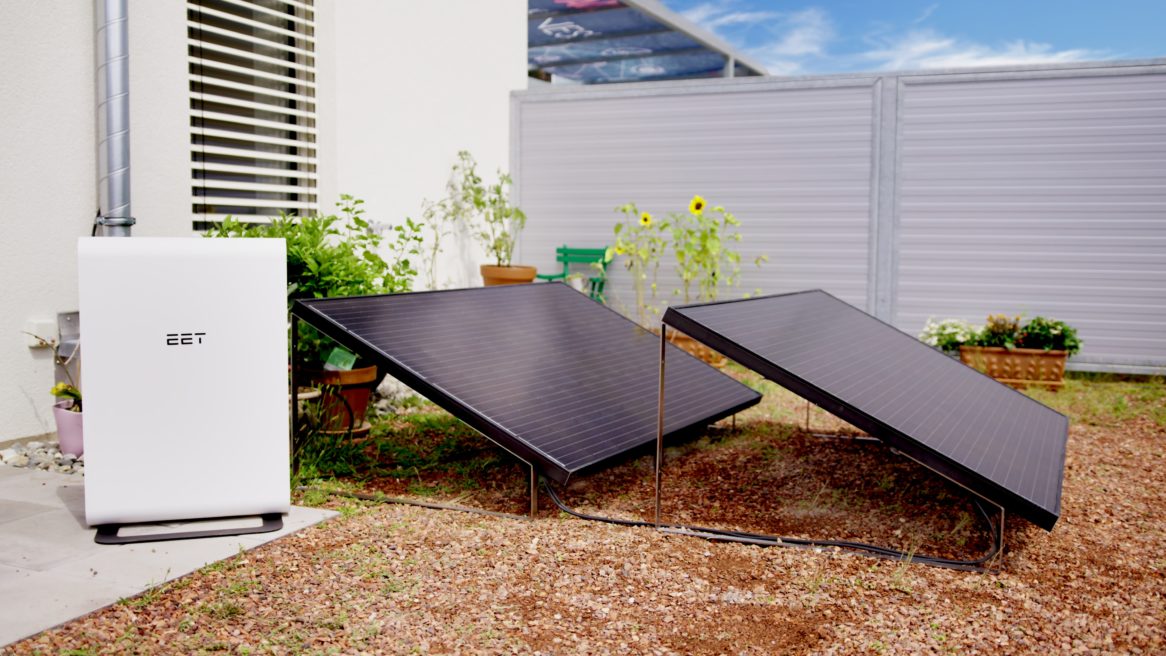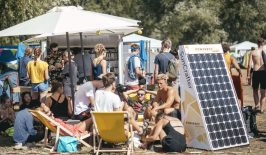Reductions in the cost of solar panel technology has lead to a relative boom in the industry, both on an industrial and private scale. However, regardless of how cheap solar power becomes, there are some households which simply cannot use traditional renewable energies for a variety of practical reasons.
Take for example tenants living in rented accommodation. Depending on their rental agreements, they may not have the permission or access to facilities to install large solar panels – and the necessary other infrastructure – on the property. This issue is particularly prevalent in some of Europe’s larger cities where it’s becoming rarer and rarer for people to be able to actually own the property they live in.
To help solve this problem, a duo of graduates from the Technical University of Graz have founded a startup which aims to provide solar energy in a convenient and accessible package. Their company, Efficient Energy Technology GmbH (EET), have created the SolMate: a plug-in solar power system designed for smaller apartments and urban living.
Plug-In and Go Solar Power
The SolMate aims to provide a system for storing and using solar energy without the need for any invasive construction. Each SolMate user will require at least enough space to mount a solar panel, however EET have developed panels which can be easily erected on rooftops, in gardens or even mounted on balcony rails and from windows. The panel then runs via a cable to their patented storage system, which converts the solar light to electricity to be added to the household supply.
Furthermore, unlike some older systems, SolMate can actually store solar power, so none goes to waste at times of low demand. Part of this is thanks to its use of a measurement technology known as NetDetection, which can assess how much power is needed in the home. The SolMate can release the power stored in it to the home’s grid as demand fluctuates, while prioritising its own green energy before drawing additional power from the normal power supply.
It achieves all this without any major construction requirements, hardware or even a visit from an electrician. Additionally, it does away with the complexity of feed-in tariffs and bureaucratic paperwork. With this in mind, it could be a more attractive alternative for young renters who may not stay at the same property for the long term.
It would seem this is the primary market for the SolMate, and the team stated in an interview with Innovation Origins that much thought has been given to the design and marketing of their product, as well as the technology. Indeed, it has been given a sleek unobtrusive design clearly inspired by the world of consumer electronics, while a free app also means you can monitor your SolMate on the go. A stylish look makes some sense, since the SolMate is expected to live alongside your other possessions, and not hidden away in a basement or attic.
However, it’s not just a new-fangled home fashion accessory. EET also makes some impressive claims regarding its efficiency. They suggest a SolMate could produce up to 25 percent of your energy needs, and can even provide a backup if the main grid goes down. It is also suggested that the cheapest model – which retails for 550 EUR – will recoup its costs within 7 years.
Of course, as with any solar technology, the SolMate will still suffer from various limitations, many of which regard the amount of sunlight your house or apartment receives. Furthermore, its small scale means it’s unlikely to rival a full-roof mounted solar panel system for larger households. But the concept might just be convenient, cheap and attractive enough for a new generation of environmentally conscious consumers to become excited about.
Currently, EET is primarily targeting Germany and Switzerland with four main products designed for balconies and gardens. It hopes to expand into the Netherlands and Italy in years to come.






